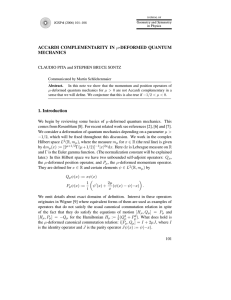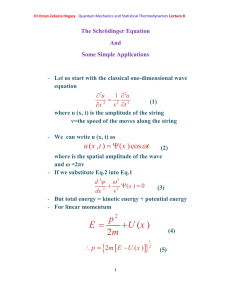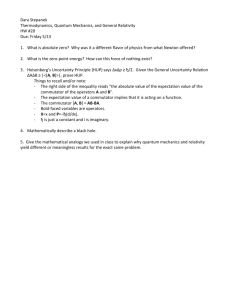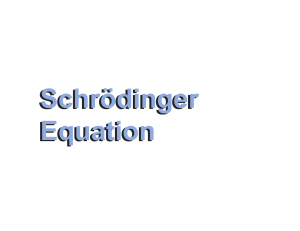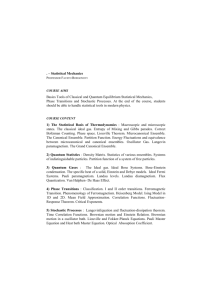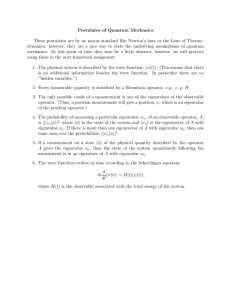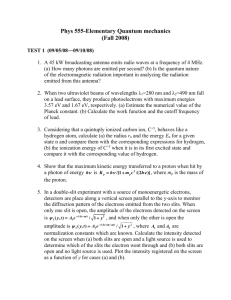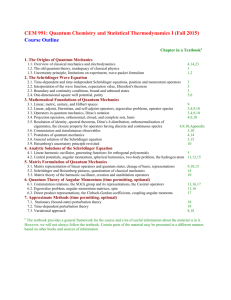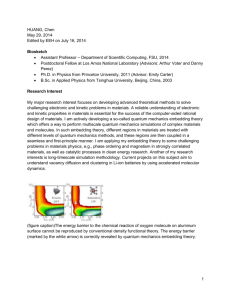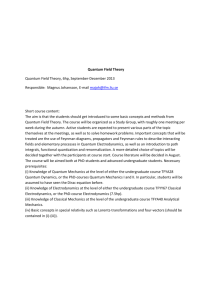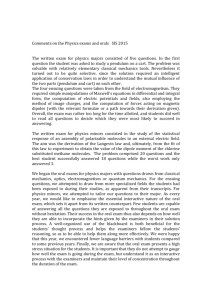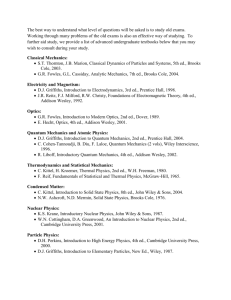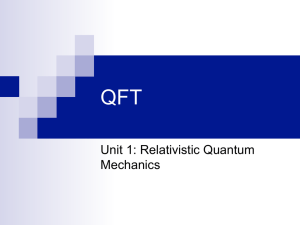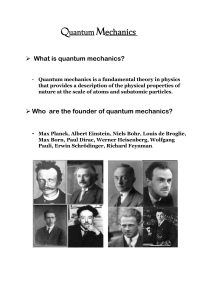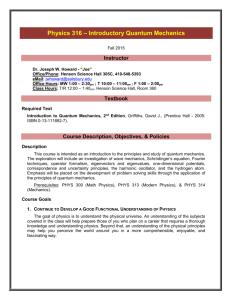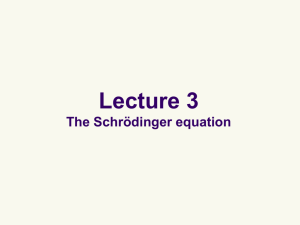Answer Key
advertisement
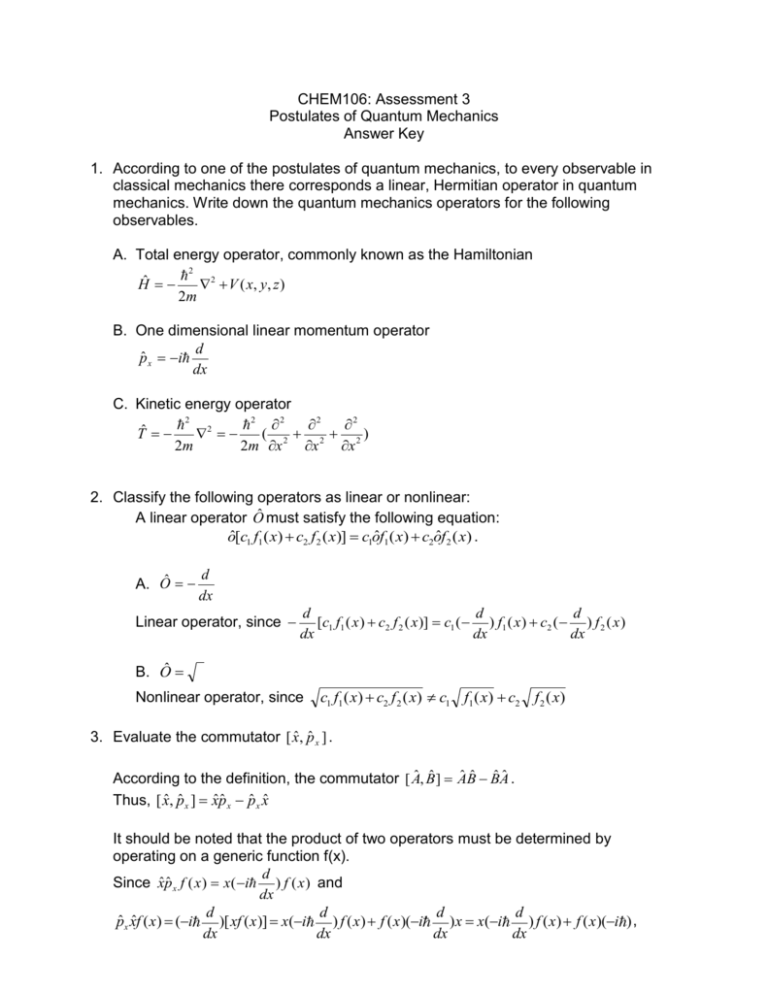
CHEM106: Assessment 3
Postulates of Quantum Mechanics
Answer Key
1. According to one of the postulates of quantum mechanics, to every observable in
classical mechanics there corresponds a linear, Hermitian operator in quantum
mechanics. Write down the quantum mechanics operators for the following
observables.
A. Total energy operator, commonly known as the Hamiltonian
2 2
Hˆ
V ( x, y , z )
2m
B. One dimensional linear momentum operator
d
pˆ x i
dx
C. Kinetic energy operator
2 2
2 2
2
2
Tˆ
( 2 2 2)
2m
2m x
x
x
2. Classify the following operators as linear or nonlinear:
A linear operator Ô must satisfy the following equation:
oˆ[c1 f1 ( x) c2 f 2 ( x)] c1oˆf1 ( x) c2oˆf 2 ( x) .
d
A. Oˆ
dx
Linear operator, since
d
d
d
[c1 f1 ( x ) c2 f 2 ( x )] c1 ( ) f1 ( x ) c2 ( ) f 2 ( x )
dx
dx
dx
B. Ô
Nonlinear operator, since
c1 f1 ( x) c2 f 2 ( x) c1 f1 ( x) c2 f 2 ( x)
3. Evaluate the commutator [ xˆ , pˆ x ] .
According to the definition, the commutator [ Aˆ , Bˆ ] Aˆ Bˆ Bˆ Aˆ .
Thus, [ xˆ , pˆ x ] xˆpˆ x pˆ x xˆ
It should be noted that the product of two operators must be determined by
operating on a generic function f(x).
d
Since xˆpˆ x f ( x ) x ( i ) f ( x ) and
dx
d
d
d
d
p̂x x̂f (x) = (-i
)[xf (x)] = x(-i
) f (x) + f (x)(-i
)x = x(-i
) f (x) + f (x)(-i ) ,
dx
dx
dx
dx
We have
[ x̂, p̂x ] f (x) = x̂p̂x f (x) - p̂x x̂f (x)
d
d
) f (x) - {x(-i
) f (x) + f (x)(-i )}
dx
dx
= i f (x).
= x(-i
Thus, [ x̂, p̂x ] = i .
4. For a particle moving in a one-dimensional space with the potential energy function
1 2
kx , write down the Schrödinger equation for the system.
2
To establish the Schrödinger equation for the system, we need to figure out the
Hamiltonian.
In one dimension, the Hamiltonian operator is defined as
2
d2
Ĥ = +V(x) .
2m dx 2
1
Plug in v ( x ) kx2 into the above, and we get
2
2
d2 1 2
Ĥ = + kx .
2m dx 2 2
Therefore, the Schrödinger equation for the system is
2
d2 1 2
ĤY(x) = (+ kx )Y(x) = EY(x).
2m dx 2 2
2
x
(with
sin
L
L
0 x L ), set up the equation for calculating the expectation value for the kinetic
energy of the particle.
5. For a one-dimensional system described by the wavefunction ( x )
According to the average value postulate of quantum mechanics, the expectation
value for any physical observable A is defined as
A * ( x ) Aˆ( x )dx
where * ( x ) is the complex conjugate of ( x ) , and the integration is done over the
entire space.
Thus, the average kinetic energy can be evaluated by completing the following
integration:
2
x 2 d 2 2 x
ˆ
T ( x )T ( x )dx
sin (
)
sin dx
2
L
L
2
m
dx
L
L
0
0
L
L
*
.
